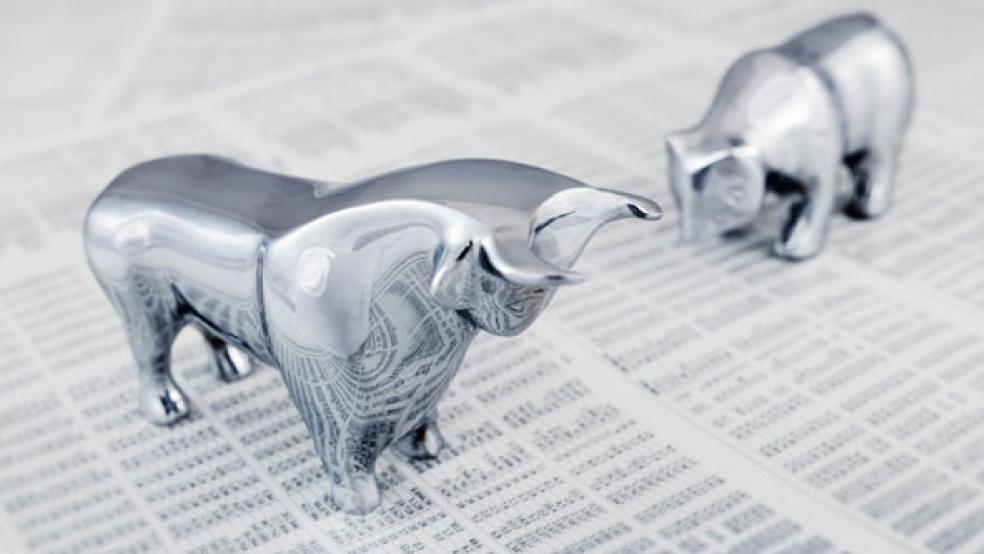Happy birthday, bull market.
Last week marked the 50th straight month during which stocks haven’t had a major selloff of significantly more than 5 percent, and as of last Friday, there had been 176 trading days without a 5 percent retreat in the Standard & Poor’s 500-stock index. The Dow Jones industrial Average on Tuesday set its 19th new closing record of the year. If a bull market can be boring, this is it (just look at the media reports about CNBC’s recent ratings).

It’s not as if the landscape is without catalysts that might provoke a slump: There’s the probability of another faceoff in Washington over the debt ceiling, the apparently perennial European crisis and the equally persistent concerns about Chinese economic growth. Not to mention geopolitical concerns. So Jeffrey Kleintop, chief market strategist at LPL Financial, reminded his clients in a briefing note this week, cautioning them on the need to be prepared in the event of a pullback. Cautionary notes like Kleintop’s appear to be falling on deaf ears, though, as the S&P 500 climbs merrily higher and higher, with the index recording its eighth record high close in nine days.
Perhaps it’s crisis fatigue: Most of the headwinds that stocks are confronting are far from new, after all. The European fiscal and economic crisis is now heading into its fourth year and, in spite of the dramatic headlines that have warned of an imminent collapse of Europe’s single currency and perhaps even the European Union itself, policymakers always seem to come up with some kind of patchwork “fix” in the nick of time. China? Growth there has been slowing for years, and even if the economy isn’t expanding at a double-digit clip, there is still plenty of potential for American companies to profit from the country’s growing middle class.
Investors increasingly are taking a “glass half full” view of the world. With a will to believe in the bullish scenario – that the rally can be extended and may even broaden – investors are ready to celebrate unequivocally good news, such as the report of a rebound in retail sales during April. For those with a gloomy frame of mind, the 0.1 percent increase wasn’t all that impressive, but determined optimists focused not on the magnitude but on the trend: The advance came in the wake of a drop of 0.5 percent in March. With gasoline prices having fallen from their highs of earlier this year and the weather finally warming up a bit, consumers, it seems, were willing to open their wallets and spend on clothing and even on big-ticket items like cars.
The trend in corporate earnings, too, can be viewed as having been encouraging by those who are eager to do so. With 90 percent of companies having reported their first-quarter results by the end of last week, Thomson Reuters calculated that the earnings growth rate rose to 5.3 percent, significantly better than the 1.5 percent forecast by analysts at the beginning of earnings season early last month.
Again, however, the silver lining comes complete with its own cloud: Corporate revenues offer reasons for worrywarts to pursue their favorite pastime. Thomson Reuters notes that S&P 500 first-quarter revenues (so far) have fallen 0.2 percent; to the extent that companies reported positive revenue “surprises,” this may well be due more to the low expectations than to the ability of companies to post higher sales. That means that for a majority of companies in the S&P 500, any growth in profits is coming not from robust growth but rather as a result of cost cutting.
Which way is the market trending? Some pundits view the prolonged rally as at least in part a short squeeze, with investors forced to cover their money-losing bearish bets by buying back shares. Stephen Suttmeier, a technical research analyst at Bank of America Merrill Lynch, argued in a report to clients this week that the buying – regardless of its cause or source – makes it feasible to argue that the S&P 500 could rally as high as 1700. Jeff Kleintop focuses on another encouraging trend: Investors aren’t just confining their buying interest to the defensive sectors of the index that have been largely responsible for the rally to date, but are venturing – albeit hesitantly – into the more cyclical companies in the technology, materials and energy groups. (Chevron is one of the companies pushing market indexes higher today.)
So is it time to sell in May and go away? Or subscribe to the point of view of hedge fund manager David Tepper that this is the time to bet big that the rally will not only last but gather momentum? This is what is meant by climbing the wall of worry: With as many signals arguing in favor of one perspective as the other, the market’s direction may boil down to investor mood on any given day, a battle the bulls have been winning. Anyone in quest of certainty or even a high degree of probability as to whether that will continue and the bull market will celebrate a 51st and 52nd monthly anniversary is likely to be doomed to disappointment.






